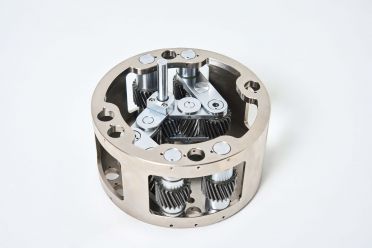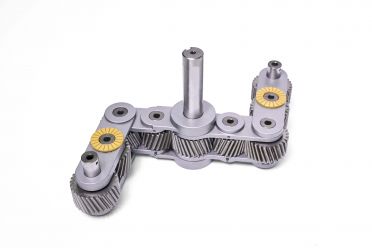Kia Corporation and Hyundai Motor Company have revealed a new Universal Wheel Drive System, or Uni Wheel for short, which moves the main drive system components to the vacant space in the wheel hub.
The companies say this new technology will create more space inside the cabin, which will in turn allow them to employ different seating configurations, add larger batteries, or offer more spacious storage spaces.
Electric motors and reduction gears, much like a combustion-powered vehicle’s engine and transmission, take up space at one end of a vehicle.
The new technology allows for many powertrain components to be integrated within the wheel hubs.
Uni Wheel has a gear configuration that consists of a sun gear in the centre which is connected to four pinion gears on each side and surrounded by a ring gear.
Power, which is generated from the electric motor, is transmitted to the sun gear, which then moves the pinion gears to rotate the ring gear.
The development of the system is still ongoing but the companies claim the technology has undergone “rigorous” testing. It released a video explaining how the technology works.
The companies claim the Uni Wheel can transmit power with almost no change to efficiency, no matter the wheel movement.
When the Uni Wheel is combined with electronic air suspension the vehicle is able to increase its ride height to offer more stabilisation on uneven roads or by decreasing the ride height to improve power and stability for high-speed driving situations.
The technology can be adapted to many types of electric vehicles including passenger cars, high-performance cars, and purpose-built vehicles (PBV). It also can be adapted to wheelchairs, robots and bicycles.
Kia Corporation and Hyundai Motor Group have already applied for and registered eight patents for the Uni Wheel in South Korea, the United States and Europe.
This isn’t the first time a car company has looked to integrate EV components within the wheel.
US startup Lordstown Motors tried its own Hub Motor technology but later filed for protective bankruptcy.


